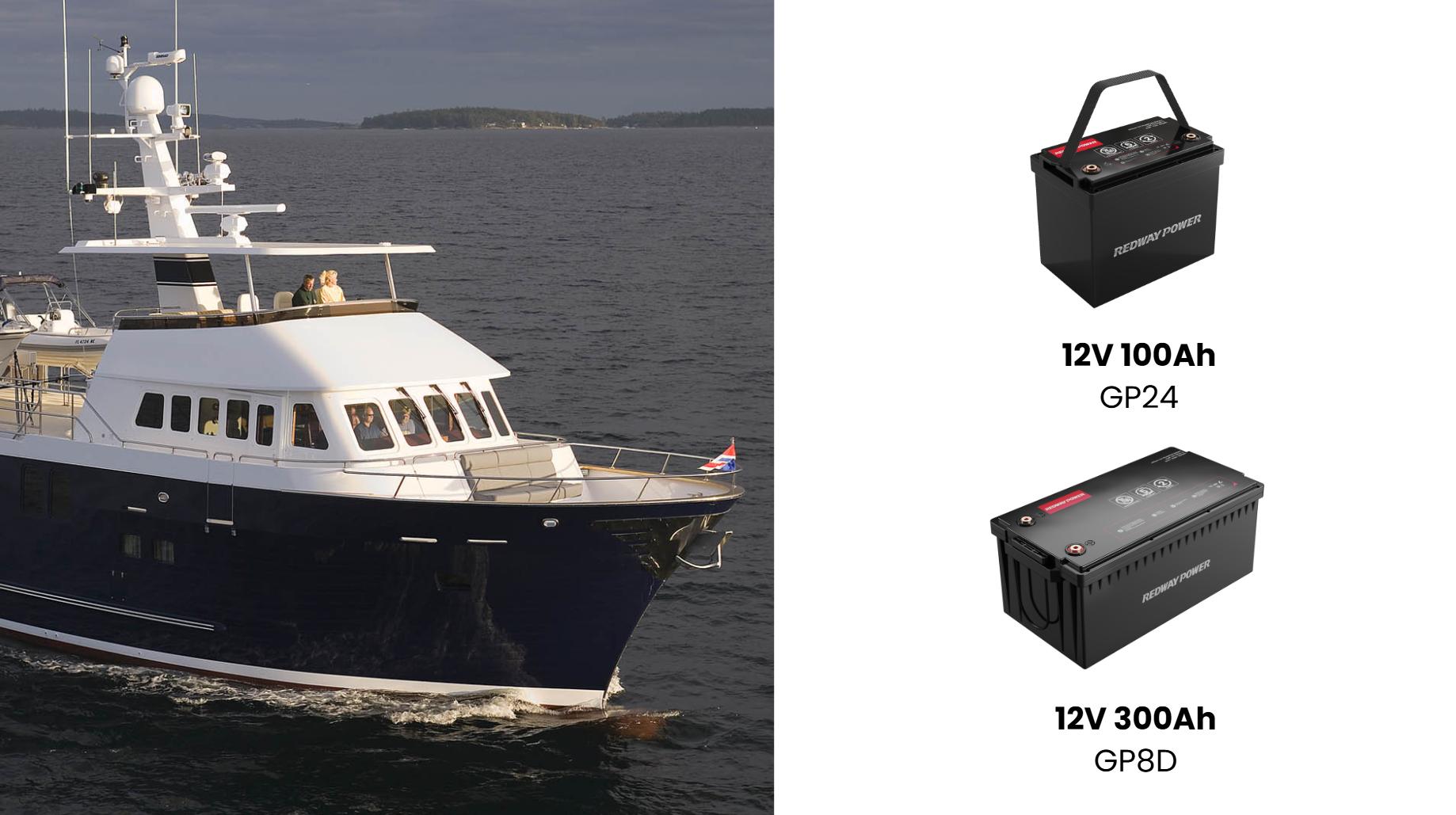12V lithium marine batteries revolutionize boating with lightweight designs, longer lifespans (2,000–5,000 cycles), faster charging, and superior power consistency compared to lead-acid. They thrive in deep discharges, resist vibration, and reduce maintenance, making them ideal for trolling motors, electronics, and critical systems. Initial costs are higher, but long-term savings offset this.
How Do 12V Lithium Marine Batteries Differ from Traditional Options?
Unlike lead-acid batteries, 12V lithium variants use lithium iron phosphate (LiFePO4) chemistry, offering 50–70% weight reduction, 95% efficiency, and no memory effect. They deliver stable voltage even at 90% discharge, whereas lead-acid struggles below 50%. Lithium batteries also tolerate partial charging without damage, a critical advantage for irregular marine use.
What Are the Key Benefits of Upgrading to Lithium Marine Batteries?
Benefits include: (1) 10–15-year lifespan vs. 3–5 years for AGM; (2) 80% capacity retention after 2,000 cycles; (3) 2-hour fast charging; (4) 50% weight savings (e.g., 30 lbs vs. 60 lbs); (5) zero maintenance; (6) 100% usable capacity; (7) built-in Battery Management Systems (BMS) for overcharge/discharge protection.
Which Marine Applications Benefit Most from 12V Lithium Batteries?
Optimal uses: (1) Trolling motors requiring sustained high current; (2) Electronics like fishfinders needing stable voltage; (3) Emergency systems (bilge pumps, radios); (4) House banks for liveaboard vessels; (5) High-vibration environments (offshore boats). Lithium’s vibration resistance outperforms lead-acid’s plate shedding issues.
How Does Temperature Affect Lithium Marine Battery Performance?
LiFePO4 batteries operate in -4°F to 140°F but charge only above 32°F. Built-in thermal sensors in premium models (e.g., Redway RS-LT12) auto-advertise charge rates. Cold cranking amps (CCA) remain stable, unlike lead-acid which loses 60% CCA at 0°F. High heat reduces lifespan less severely than with AGM.
What Safety Features Do Lithium Marine Batteries Include?
Multi-layer protections: (1) BMS with cell balancing; (2) Short-circuit shutdown (reacts in <2ms); (3) Over-temperature charge/discharge blocks; (4) IP67 waterproofing on premium models; (5) UL1973 certification for marine use; (6) Flame-retardant casing. Unlike lithium-ion, LiFePO4 doesn’t suffer thermal runaway.
Can Lithium Batteries Integrate with Existing Marine Charging Systems?
Yes, but lead-acid chargers may undercharge lithium. Optimal charging requires 14.2–14.6V absorption, 13.6V float (vs. 13.8V for AGM). Use lithium-compatible chargers like NOCO Genius or install a DC-DC converter. Solar compatibility is excellent due to lithium’s wide voltage acceptance (10V–14.6V).
How to Calculate the Right Lithium Battery Size for Your Boat?
Formula: (Total Amp-Hours Needed) = (Daily Usage Ah) × (Days Between Charges). Add 20% buffer. Example: 50Ah/day × 2 days = 120Ah lithium (equivalent to 240Ah lead-acid). For trolling motors: (Thrust lbs ÷ 40) × Runtime hours = Ah. A 70-lb thrust needing 6 hours requires ≈105Ah lithium.
What Are the Hidden Costs of Switching to Lithium Marine Batteries?
Beyond purchase price: (1) Potential charger upgrade ($150–$400); (2) Bus bar upgrades for high-current systems; (3) Battery monitor ($200–$600); (4) Heated storage solutions for cold climates. However, elimination of replacement costs (3–5 lead-acid changes) saves $1,800–$3,000 over 15 years.
Expert Views: Redway’s Take on Marine Lithium Adoption
“Modern LiFePO4 batteries like our RS-LT12 series now withstand saltwater immersion up to 72 hours—critical for offshore emergencies. The real breakthrough is adaptive BMS that learns usage patterns, extending lifespan by 20%. We’re seeing 98% customer retention after 3 years, proving lithium’s ROI in marine environments.”
Conclusion
12V lithium marine batteries represent not just an incremental improvement but a paradigm shift. With 300% longer service life, 50% weight reduction, and maintenance-free operation, they solve chronic pain points for boaters. While the upfront investment gives pause, the TCO analysis makes lithium the unequivocal choice for serious mariners.
FAQs
Q: Can lithium batteries explode on boats?
A: LiFePO4 chemistry is inherently stable—no explosive gases. UL tests show no thermal runaway even when punctured.
Q: Do lithium batteries work with old trolling motors?
A: Yes, but ensure motor’s amp draw doesn’t exceed battery’s continuous discharge rating (e.g., 100Ah battery with 100A BMS handles 1C draw).
Q: How to store lithium batteries offseason?
A: Charge to 50–60%, store in dry place (32–77°F ideal). Self-discharge is 2–3% monthly vs. 5–15% for lead-acid.




